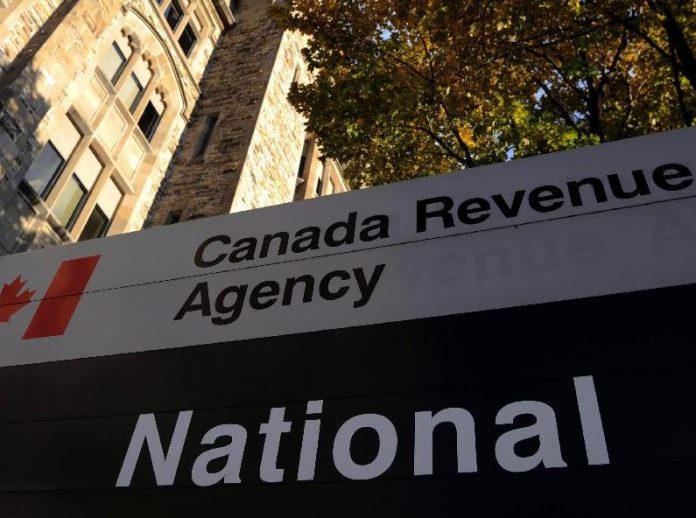THE Canada Revenue Agency (CRA) says it understands that many students have been struggling with financial hardship during the COVID-19 pandemic. Even if you didn’t make any income last year, that’s okay. It still encourages you to file your income tax and benefit return, so you don’t miss out on a refund, benefit, or credit that you may be entitled to receive.
To get your refund faster, avoid delays and reduce your exposure to COVID-19, the CRA encourages you to sign up for direct deposit, and make sure you file online and on time. The CRA’s Get Ready page has information about online filing and deadlines, as well as other helpful links.
COVID-19 benefits and your return
If you received the Canada Emergency Response Benefit (CERB), Canada Emergency Student Benefit (CESB), Canada Recovery Benefit (CRB), Canada Recovery Sickness Benefit (CRSB), or Canada Recovery Caregiving Benefit (CRCB) payments, these are considered taxable income, and you will have to enter on your return the total of the amounts you received. You will receive a T4A (for benefits issued by the CRA) and/or a T4E (for benefits issued by Service Canada) tax slip in the mail with the information you need for your return. You can view tax slips online as of February in My Account. Residents of Quebec will receive both a T4A and RL-1 slip.
In addition, you may owe tax when filing your return. This will depend on your personal circumstances, and the type of COVID-19 benefits you received:
- If you received the CERB or CESB, no tax was withheld when payments were issued, and you may owe tax when filing your 2020 tax return.
- If you received the CRB, CRSB, or CRCB, 10% tax was withheld at source. However, this may not be all the tax you need to pay. When you complete your personal income tax return, you may need to pay more (or less), depending on how much income you earned in 2020.
The CRA says it recognizes that for some individuals, repaying these benefits could present significant financial hardship. For this reason, payment arrangement parameters have been expanded to give Canadians more time and flexibility to repay based on their individual financial situations.
There may be other impacts to filing your tax return that are specific to the COVID-19 benefit you received, or if you are a resident of Quebec.
Get free tax help
If you have a modest income and a simple tax situation, a volunteer may be able to complete your income tax and benefit return, for free. This year, volunteers may be able to complete and file returns virtually by videoconference or phone, or through a document drop-off arrangement. To determine if you’re eligible and to find a tax clinic near you, go to canada.ca/taxes-help.
You can also quickly and securely file your return online. The CRA has a list of certified tax software products that are easy to use, fast, and secure. Some of which are free.
Put more money in your pocket
Here are some benefits and credits you may be entitled to that could save you money at tax time:
- Tuition tax credit – You could reduce the tax you may owe if you paid tuition fees to a post secondary school, or to an educational institution that has been certified by the Minister of Employment and Social Development to develop of improve skills in an occupation.
- Carrying forward past amounts – You can no longer claim federal education and textbook amounts on your return. But, you may still be able to carry forward unused amounts from previous years to another year. If you carry forward an unused amount, you must claim it when you file your return for the first year you owe income tax.
- Canada training credit – You may be able to claim this refundable credit for eligible tuition and other fees paid to an eligible educational institution in Canada for courses you took in 2020, or fees paid to certain bodies in respect of an occupational, trade, or professional examination taken in 2020.
- Interest paid on your student loans – You may be able to claim part of the interest you’ve paid since 2015 on your student loan for post-secondary education.
- Eligible moving expenses – If you moved for school and are a full-time student, you may be able to claim your moving costs. However, you can only deduct these expenses from the parts of your scholarships, fellowships, bursaries, certain prizes, and research grants that are required to be included in your income. You may also be able to claim the cost of moving for work, such as a summer job or running a business.
In this case, you can deduct eligible moving expenses from the employment or self-employment income you earned at your new work location. You can claim moving expenses if you moved at least 40 kilometres closer to your work or school. - Canada workers benefit – This benefit is a refundable tax credit. It is available to eligible individuals and families who work, but earn a low or modest income. If you are a full-time student, you must have an eligible dependant to receive this benefit.
- Goods and services tax / harmonized sales tax (GST/HST) credit – You may be eligible to get a tax-free payment four times a year. This payment is for people with low or modest incomes. You may be eligible if you turn 19 before April 1, 2022, or if you have a spouse or common-law partner, or are a parent and live with your child. To keep getting these payments, file your return every year.
- Canada child benefit – If you have a child, you may be able to get tax-free monthly payments. These payments are made to eligible families to help with the cost of raising children under 18. To keep getting these payments, file your return every year.
- Provincial and territorial benefits – You may qualify for provincial or territorial benefits, depending on where you live.
- Climate action incentive – If you’re a resident of Alberta, Saskatchewan, Manitoba, or Ontario, you may be eligible for the climate action incentive payment when you file your 2020 return. You could receive a larger payment if you live in a small or rural community. The incentive will first lower the taxes you might owe, then create or increase your refund.
- Child care expenses – If you paid someone to look after your child so you could go to school, do paid work, or do research, you may be able to deduct your child care fees.
Take advantage of the CRA’s digital services
Sign up for My Account to easily manage your tax and benefit affairs online. You can use My Account to quickly change your address and direct deposit information, track your refund, view your return status, make a payment, sign up for email notifications, and more.
If you signed up for My Account to apply for the CERB or the CESB, the CRA encourages you to enter the security code you received from us in the mail to access all the features available in My Account.
Protecting you from scams and fraud
The CRA recognizes that there is a significant financial and emotional effect on victims of scams, fraud, and identity theft and it says it is doing its best to protect Canadians and ensure they receive the benefits to which they are entitled.
It is important to protect yourself from scams, and to know when and how the CRA might contact you.
As a fraud prevention measure you can sign up for email notifications from the CRA to receive a notification when you have new mail to view in My Account and when important personal information such as your address or direct deposit information is changed on CRA records. You can register to receive email notifications in My Account or the MyCRA or MyBenefits CRA web apps.
The scams and fraud webpage provides more information about how to protect yourself from fraud.
To learn more about the benefits of filing, go to canada.ca/taxes-students. You can also check out our questions and answers about filing your taxes for help on the tax filing process.












